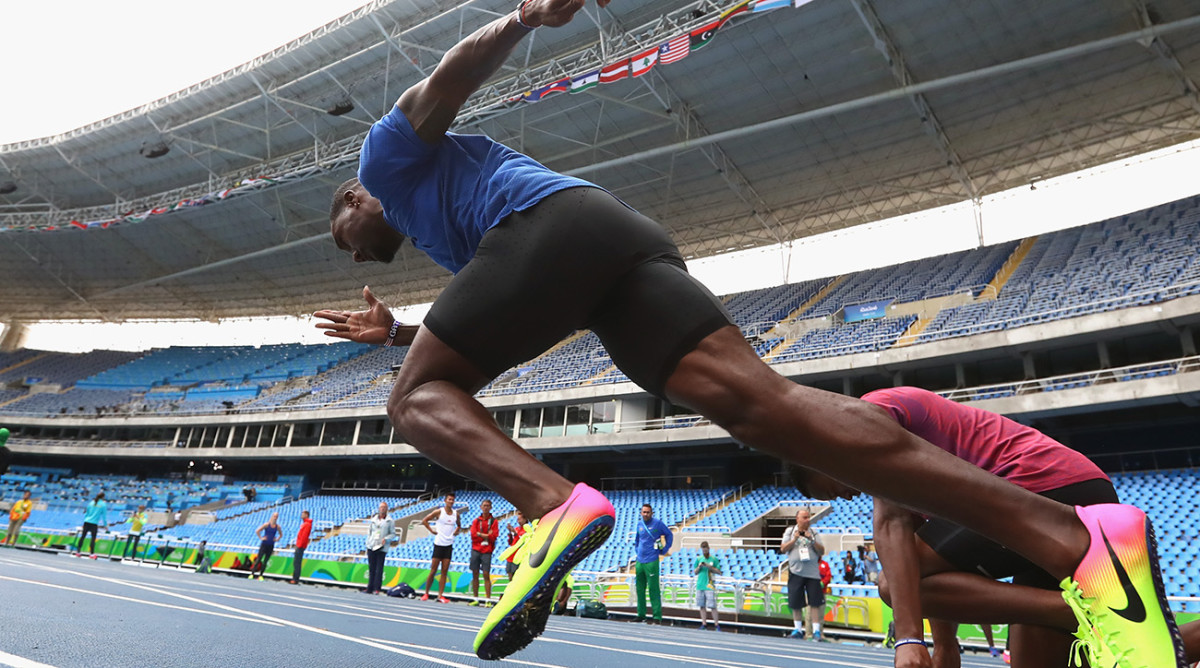Former Olympian Sarah Claxton's power and agility workout
This article was originally published on AskMen and AskMenUK. Check out askmen.com for more ways for men to improve their lives and advice on on dating, fitness, grooming and more.
With lots of negative coverage around unfinished venues and unclean conditions, it's been easy to forget that the RIo Olympics will be a showcase of the greatest athletes on Earth. To celebrate, our Workout of the Week comes from someone who has competed for a coveted gold medal. If you want the speed (or just the body) of an Olympic sprinter, read on.
Who's my new PT?
Sarah Claxton is a former Olympian, having competed in Athens, 2004 and Beijing, 2008 where she made the 100m hurdles final. She specialised in strength, power and agility during her training an an Olympian and will impart some of that knowledge unto you, now.
A day of eating with U.S. Olympic marathoner Shalane Flanagan
What are we doing?
"Doing these exercises will help increase cardiovascular fitness and keep the heart elevated, keeping you in the fat burning phase," Sarah says. "These also help with muscle endurance, strength and power as we have to be very explosive from the blocks and be able to maintain our top speed for longer.
"The following workout improves speed and power by incorporating hill sprints and plyometric exercises. As an athlete we use this method of training to improve our basic speed and power output and to help with our general fitness. When sprinting uphill your muscles have to work harder to battle against the gradient and gravity. This means muscles in the lower body (glutes, hamstrings, quads and calves) are forced to contract more powerfully while supporting your full body weight."
What is it good for?
Best for fat burning, muscle endurance and strength and power.
Difficulty level
This workout is suitable for anyone wanting to improve their speed and power. Recovery times can be adjusted depending on fitness levels.
If you haven't done something this intense before just increase the recovery time from 3 mins to 5-6 mins.
The age of Olympians: Rio 2016 highlights younger, older athlete performances
The Workout
Start with: Hill sprints
Hill sprints can produce specific adaptations in the neuromuscular system that will allow the body to generate force faster to sprint faster.
- 30m sprint (as fast as you can) x 5 – maintain a slight lean into the hill. Pump the arms forwards and backwards to maintain speed and keep the knees driving forwards.
- Recover for 3-minutes in between sprints.
- Then step up to a 60m sprint (as fast as you can) x 5 – again, maintain a slight lean into the hill.
- Recover for 5-8 minutes in between sprints.
- Once you have completed this, find a flat piece of grass then sprint again for 40m and you will find that your flat speed has increased.
- This workout can be repeated 2-3 times a week.
Followed by: Plyometrics/bodyweight circuit
Plyometrics are exercises that aim to develop strength and speed by conditioning the neuromuscular and elastic characteristics of the muscle. Plyometrics are beneficial because they help to produce greater power by training the muscles to contract more quickly and forcefully from an actively pre-stretched position.
• A list of the best organic protein powders
This circuit incorporates bodyweight exercises and plyometrics to help improve on power and strength:
- Bunny hops x 5 – Squat down with your feet together then jump forwards, driving your arms forwards to help with distance and balance. Once you land squat down again to absorb the impact then hop again doing the same action a further 4 times.
- 3 minute rest between sets.
Then 15-20 reps of each station below, x 4 rounds, 1 minute rest between rounds:
- Press ups – elbows tucked into your side. This brings in more of your bicep and triceps.
- Tuck jumps – knees brought up to the chest while jumping high as you can.
- Squat jumps – squat down and jump as high as possible.
- Burpees – with a jump at the standing part of the burpee.
- Mountain climbers – press-up position, kick your knees toward your chest (alternating) in a sprinting fashion.
- High knees – run on the spot bringing your knees up as high as your hips.
Sarah is now a personal trainer at renowned body transformation specialists Embody Fitness.





